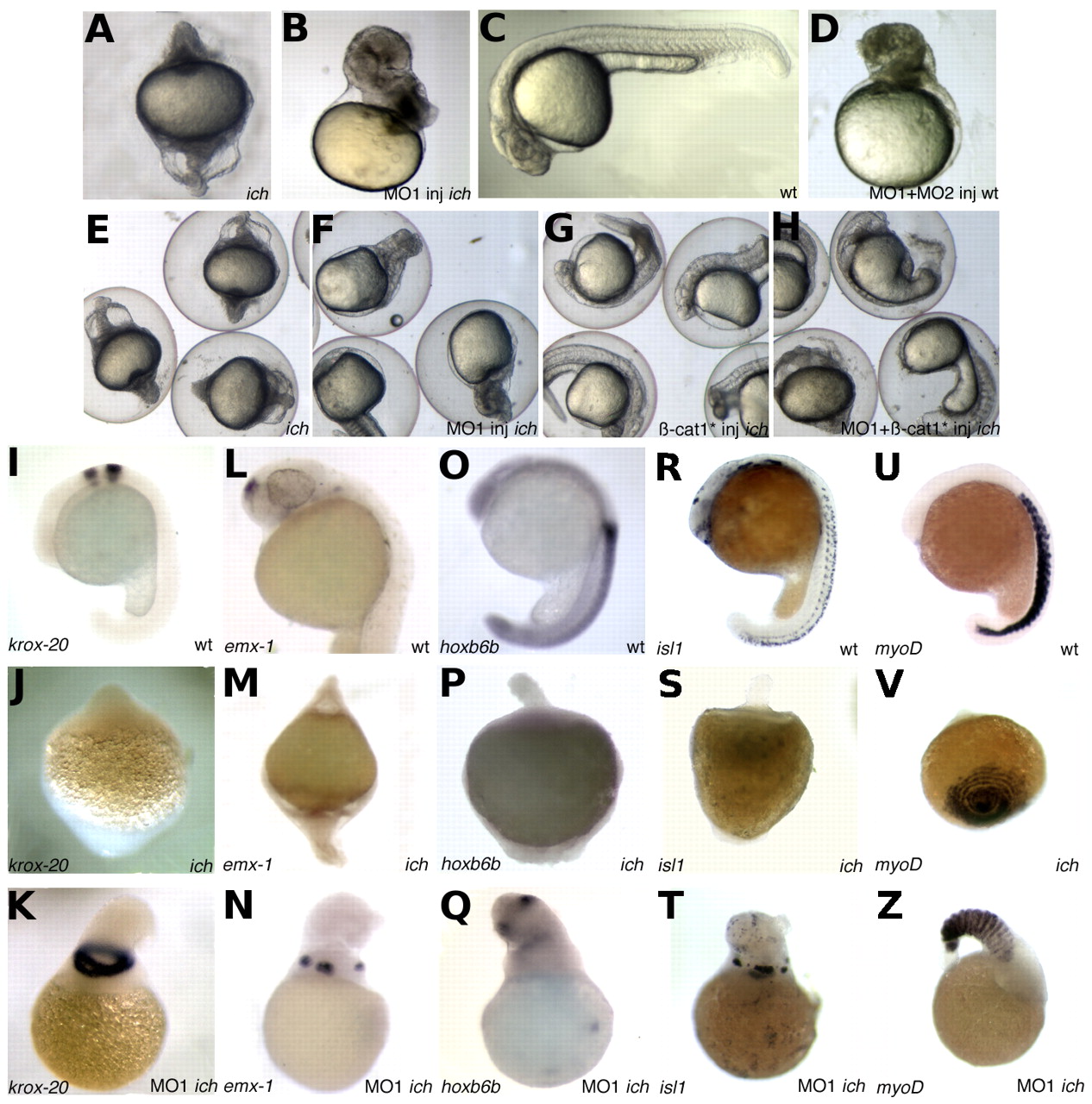Fig. 6
Fig. 6 A new phenotype (`ciuffo') results from loss of function of both β-catenin genes. (A-D) The `ciuffo' phenotype is apparent in ichabod embryos injected with 3 mM MO1 (B) and wild-type embryos injected with 3 mM MO1 and 3 mM MO2 (D). Uninjected ichabod (A) and wild-type (C) embryos are shown for comparison. (E-H) Co-injection of β-catenin-1* RNA (β-catenin-1 RNA with an altered ribosome binding region that will not bind to MO1) into ichabod embryos can suppress the `ciuffo' phenotype produced by MO1 injection. In comparison with uninjected ichabod embryos, which develop to C1 phenotypes (E), injection of 1 mM MO1 transforms approximately two-thirds of the embryos into `ciuffo' phenotypes (F), injection of the RNA alone causes rescue to wild-type and less ventralized C2-C4 phenotypes (G), but co-injection of both MO1 and RNA results in embryos with the original severe C1 phenotype and with C1a phenotype (H). Each of these panels shows a group of representative embryos of one of four repeats of this experiment, which all gave consistent results. (I-Z) Hindbrain and anterior neural markers and neuronal markers are not expressed in ichabod embryos (J,M,S) but are expressed in 3 mM MO1-injected ichabod (`ciuffo') embryos (K,N,T). The posterior neural marker hox6b6 is expressed in some ichabod embryos (P) and in `ciuffo' embryos (Q). Wild-type embryos are shown as positive controls (I,L,O,R). The following probes were used: krox20 (I-K), emx1 (L-N), hoxb6b (O-Q) and islet1 (R-T). All three types of embryos express myoD (U-Z), although the expression is radialized in both ichabod (V) and `ciuffo' (Z) embryos compared with wild type (U). Embryos in A-H and L-N are at 24 hpf and those in I-K,O-V are at 22 hpf. For I-Z, probes are indicated in the lower left corner and type of embryo in the lower right corner of each panel.

